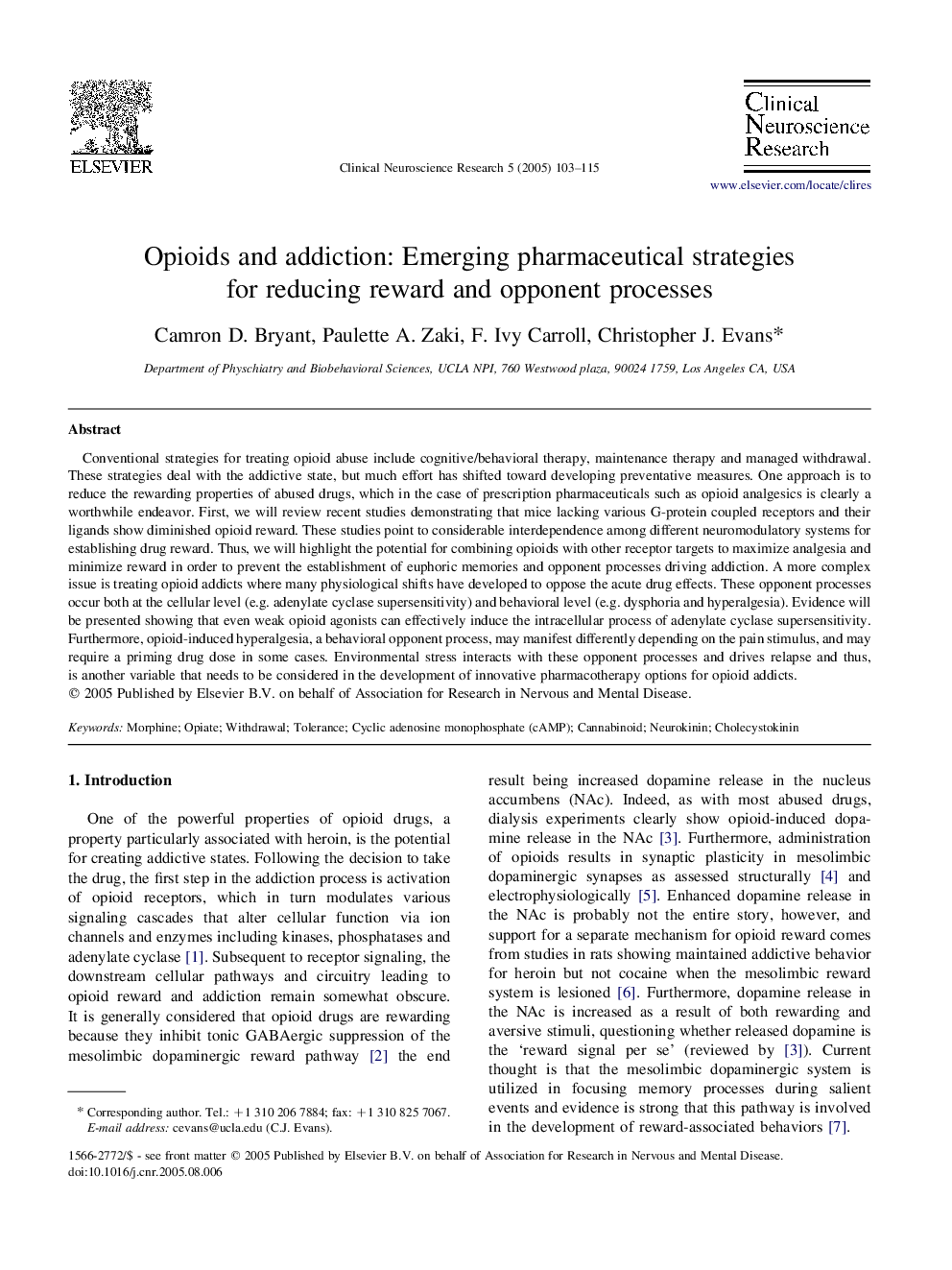| Article ID | Journal | Published Year | Pages | File Type |
|---|---|---|---|---|
| 9189886 | Clinical Neuroscience Research | 2005 | 13 Pages |
Abstract
Conventional strategies for treating opioid abuse include cognitive/behavioral therapy, maintenance therapy and managed withdrawal. These strategies deal with the addictive state, but much effort has shifted toward developing preventative measures. One approach is to reduce the rewarding properties of abused drugs, which in the case of prescription pharmaceuticals such as opioid analgesics is clearly a worthwhile endeavor. First, we will review recent studies demonstrating that mice lacking various G-protein coupled receptors and their ligands show diminished opioid reward. These studies point to considerable interdependence among different neuromodulatory systems for establishing drug reward. Thus, we will highlight the potential for combining opioids with other receptor targets to maximize analgesia and minimize reward in order to prevent the establishment of euphoric memories and opponent processes driving addiction. A more complex issue is treating opioid addicts where many physiological shifts have developed to oppose the acute drug effects. These opponent processes occur both at the cellular level (e.g. adenylate cyclase supersensitivity) and behavioral level (e.g. dysphoria and hyperalgesia). Evidence will be presented showing that even weak opioid agonists can effectively induce the intracellular process of adenylate cyclase supersensitivity. Furthermore, opioid-induced hyperalgesia, a behavioral opponent process, may manifest differently depending on the pain stimulus, and may require a priming drug dose in some cases. Environmental stress interacts with these opponent processes and drives relapse and thus, is another variable that needs to be considered in the development of innovative pharmacotherapy options for opioid addicts.
Keywords
Related Topics
Health Sciences
Medicine and Dentistry
Clinical Neurology
Authors
Camron D. Bryant, Paulette A. Zaki, F. Ivy Carroll, Christopher J. Evans,
